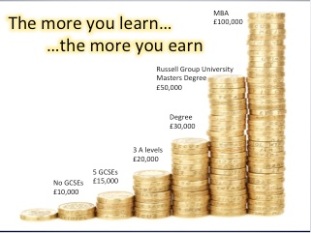Use them as a record of their achievement
Your school may have a strict policy about exercise books, or it may have no policy at all. Either way, here’s one approach you can take towards them, and its associated benefits.
Philosophically, treat the book not as a jotter, or a space for working, but as a record of their progress and achievement over time. The work they do isn’t for their own benefit, or to improve their learning, it’s a presentation for an audience. Of course, it *will* have the effect of improving their learning, but we just don’t put the emphasis there. These books need to be presentable, in part so you can read them, but also for Ofsted, and for parents to look over.
Create an audience – the bigger the audience, the more care they’ll take. Make it clear that you’ll be reading these books regularly, as will the head of department, other teachers, the head teacher, Ofsted, their parents, school governors, etc. It may or may not be true… but give them the feeling they’re writing and working hard for some kind of recognition, and then make sure that you, at least, are checking their work every few lessons.
What they write in the books and what you do with them once you take them in varies now from subject to subject, but provided you regularly show them you’re looking at their books, and get them to write as though they’re doing it for an audience, you’re likely to reap the following benefits:
- Increased effort during lessons, and an ability to track those who are being lazy
- Improved writing and presentation skills
- Less graffiti in books, potentially eradicating it completely over time
- Improved learner understanding
For maths teachers I’ll add the following brief suggestion for what they can write in their books in 80-90% of lessons:
- Today’s date in full (e.g. Sunday 8th July)
- A title or learning objective (not because that will help them learn anything, but because it helps to structure the book when you or others look through it)
- A new mathematical fact or formula you’ve given them (if applicable)
- 2-3 model examples copied from the board, which they can refer to when they’re not sure how to answer the problems you set. These should demonstrate *exactly* how you would like them to set out their working
- The questions you ask them to attempt, with full complete working – they should write the problem as well, if it’s short enough. If it’s long, don’t waste their time with copying it.
One caveat:
Some kids can get so fussy about their books being ‘perfect’ that they stop doing any work at all for fear of making mistakes. You need to make it clear to them that the books almost *have * to have mistakes in them, to demonstrate their progress, and that a ‘perfect’ book would be expected to have mistakes, with their corrections nearby, showing how they learnt and progressed.








